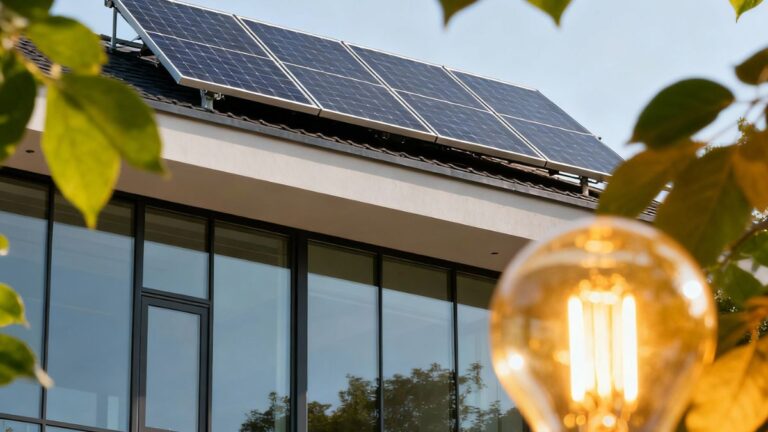
India’s ambitious goal of becoming a $5 trillion economy by 2024-25 has faced yet another setback. The recent data released by the National Statistical Office (NSO) projects India’s GDP growth at 6.4% for the current financial year—marking the lowest growth in four years. This sharp decline has raised serious concerns about the health of the Indian economy and its capacity to achieve its long-term targets.
In this article, we will explore the reasons behind the economic slowdown, its implications, and the key policy measures needed to address the challenges.
India’s Economic Aspirations: A Recap
The Indian government had set ambitious economic milestones:
- $5 trillion economy by 2024-25 (later revised to 2027-28).
- $7 trillion economy by 2030.
- $30 trillion economy by 2047, marking 100 years of independence.
To achieve these milestones, India’s economy must grow at a sustained 7% or more annually in real terms. However, recent trends indicate significant challenges.
Recent GDP Growth Trends
According to NSO’s first advanced estimates for 2024-25, India’s GDP growth rate is projected at 6.4%. While the first quarter witnessed a growth rate above 6%, the second quarter fell to just above 5%. This decline has led experts to question if the Indian economy is facing a cyclical slowdown or deeper structural challenges.
Why Is This Data Important?
- Impact on Budget Projections:
- The government’s nominal GDP growth estimate for this financial year was 10.5%, but the actual growth is just 9.7%.
- Lower GDP implies reduced tax collections, directly impacting the government’s ability to meet fiscal deficit targets and fund public programs.
- Policy Formulation:
- GDP projections are crucial for budget allocations. Lower growth may constrain the government’s capacity to announce major reforms or increase public spending.
- Private Sector and Consumption Trends:
- Household consumption, which accounts for over 60% of GDP, has shown signs of stagnation.
- Private sector investments have also declined, with growth slowing from 9% last year to 6.4% this year.
Key Challenges Facing the Indian Economy
1. Slow Private Sector Investments
Despite measures like corporate tax cuts, Make in India, and PLI schemes, private sector investment remains sluggish. This indicates low confidence among businesses in the domestic demand environment.
2. K-Shaped Household Debt Stress
A growing K-shaped debt pattern among households is a cause for concern:
- Borrowers are increasingly taking unsecured loans for consumption, not asset creation.
- Many borrowers are subprime, meaning they have poor credit histories, increasing the risk of loan defaults.
- The Reserve Bank of India (RBI) has warned about rising non-performing assets (NPAs) in the banking sector, reminiscent of the 2008 global financial crisis caused by subprime mortgage defaults in the US.
3. Rupee Depreciation
The Indian rupee has depreciated by 3% against the US dollar in 2024 alone, crossing the ₹85 per dollar mark:
- Foreign Portfolio Investments (FPIs):
- Net FPI inflows into equity markets have fallen by 99%, from ₹1.7 lakh crore last year to just ₹1,600 crore this year.
- This withdrawal of foreign capital has put immense pressure on the rupee.
- Inflation Differentials:
- India’s inflation rates remain higher than those in developed economies, weakening the rupee further.
- Forex Reserves Depletion:
- RBI’s market interventions to stabilize the rupee have led to a decline in foreign exchange reserves.
4. Rising Inflation and Income Inequality
- Food and retail inflation have eroded the purchasing power of households, particularly in rural areas.
- Premiumization of Demand:
- While luxury goods like high-end cars and real estate are witnessing growth, essential FMCG products face declining demand—a clear indicator of growing wealth inequality.
Implications of the Slowdown
1. Government’s Fiscal Challenges
- Reduced tax revenues and higher fiscal deficits may limit public spending on infrastructure, welfare programs, and subsidies.
- Meeting the fiscal deficit target of 5.9% for 2024-25 will be challenging.
2. Employment Generation
- Lower private sector investment and declining demand may hamper job creation, particularly in labor-intensive sectors.
3. Rising External Vulnerabilities
- Dependency on imports, coupled with a depreciating rupee, could worsen India’s current account deficit (CAD).
4. Potential Banking Sector Crisis
- Rising NPAs due to subprime borrowers could destabilize the banking sector, reducing its capacity to lend further.
What Can Be Done? Policy Recommendations
1. Boost Private Sector Investments
- Simplify compliance for PLI schemes and reduce tariffs on intermediate goods.
- Provide tax incentives for investments in high-growth sectors like green energy and technology manufacturing.
2. Address Income Inequality
- Strengthen social welfare programs targeting low-income households.
- Promote rural employment generation schemes like MNREGA to boost consumption in rural areas.
3. Ensure Stable Macroeconomic Indicators
- Control inflation through a balanced monetary policy.
- Strengthen the rupee by attracting long-term foreign direct investments (FDIs) instead of short-term FPIs.
4. Reform Banking Practices
- Encourage banks to prioritize secured loans and monitor the rising share of unsecured lending.
- Increase oversight on subprime lending to prevent a potential credit crisis.
5. Enhance Budgetary Focus on Growth
- Allocate funds to sectors like infrastructure, education, and healthcare, which have long-term economic multipliers.
- Announce structural reforms to address bottlenecks in ease of doing business and investment.
Conclusion
The current economic slowdown is a wake-up call for India to reevaluate its growth strategies. While the government has implemented significant reforms in the past, achieving long-term sustainable growth requires bolder, more inclusive measures. Addressing structural bottlenecks, promoting equitable growth, and ensuring macroeconomic stability will be critical as India prepares its budget and charts a path toward becoming a global economic powerhouse.
What do you think about the current state of the Indian economy? Share your views in the comments below.
Also Read: Govt Fixed Error in Gold Import Data
Disclaimer: The information presented in this article is for educational purposes and aims to provide a detailed analysis of India’s economic situation as of January 2025.
Follow Fusion IAS


